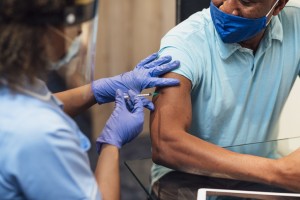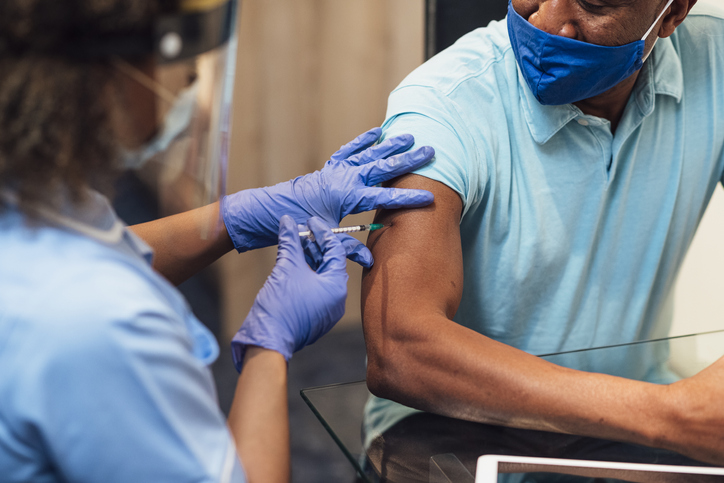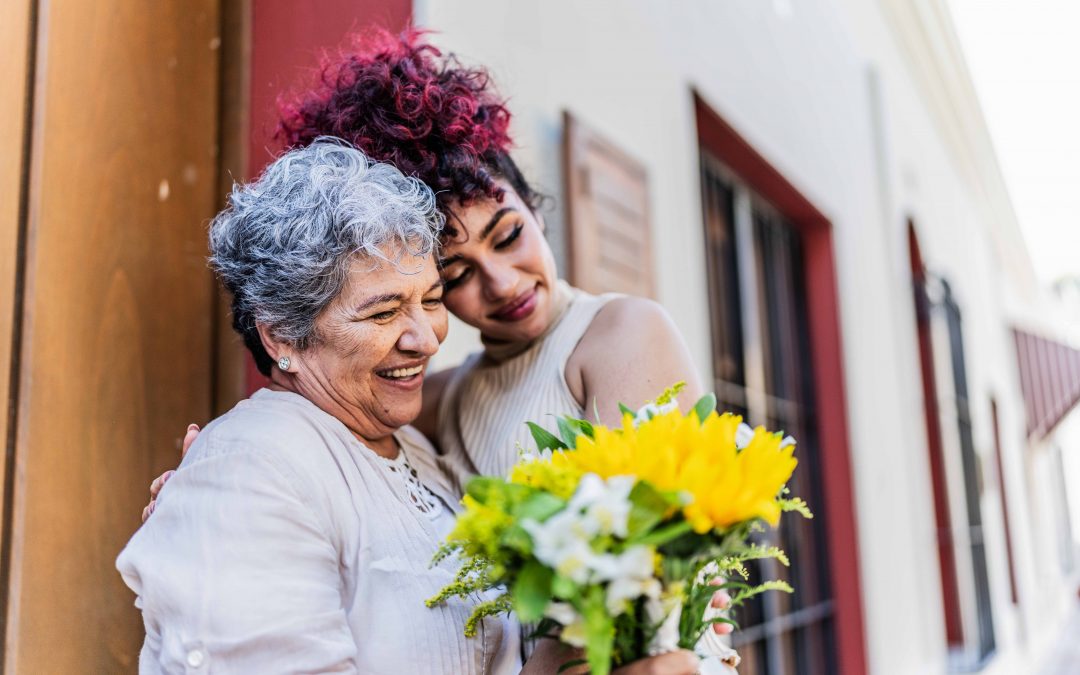NASW Senior Policy Advisor
While much of the nation is beginning to return to a degree of normalcy since the start of national COVID vaccine distribution, there are still nagging and serious barriers to ending the pandemic in the United States. One major barrier is vaccine hesitancy in communities of color – especially among Black and Brown people. At the start of the vaccine rollout there was cautious optimism that, because of the high COVID rates,these communities would respond to COVID vaccination outreach efforts. However, that hope did not come to fruition.
 Black and Hispanic people have received smaller shares of COVID vaccinations. Among the 57 percent of Americans for which ethnicity data was available who have had at least one dose of the Covid-19 vaccine, the majority are white while only about 15 percent are Hispanic and 9 percent are Black: both lower rates than their proportion of the U.S. population. Fewer than half of states have vaccinated more than a third of their Black populations, The reasons behind continued disparities in vaccine distribution are complex .
Black and Hispanic people have received smaller shares of COVID vaccinations. Among the 57 percent of Americans for which ethnicity data was available who have had at least one dose of the Covid-19 vaccine, the majority are white while only about 15 percent are Hispanic and 9 percent are Black: both lower rates than their proportion of the U.S. population. Fewer than half of states have vaccinated more than a third of their Black populations, The reasons behind continued disparities in vaccine distribution are complex .
There are those who say vaccine hesitancy in Black and Brown communities is currently less of a problem as compared to six months ago. On the other hand, there are suggestions that hesitancy against getting vaccinated reflects the history of health disparities in the nation’s public health infrastructure that disproportionately impact communities of color. Nonetheless, even with some progress towards closing the vaccination equity gap, achieving parity in vaccinations as compared to White communities continues to be an issue.
This problem is certainly not due to a lack of availability of the vaccine. The United States has produced enough vaccine to vaccinate every man, woman and child in this country. It is, simply stated, that Black and Brown Americans are not signing up for vaccines at the same rate as Whites and Asians.
The lag in vaccinations among Black and Brown people should not be taken lightly. As most are well-aware, COVID-19 mortality rates have disproportionately taken a toll in these communities. The concern is that many Americans equate the recent lower rates COVID-related hospitalizations and deaths a being the end of the pandemic. Nothing can be further from the truth . Therefore, gaps in vaccinations among Black and Brown people have serious public health implications.
For this reason, the White House’s Vaccine Confidence Initiative has launched a new campaign to eliminate the COVID vaccination gap in communities of color. The National Association of Social Workers (NASW) is participating in this campaign through its partnership with the Made to Save health table . During the month of June and many months thereafter, national civil rights and health equity organizations are joining together to outreach to these communities with messages about the importance of becoming fully protected against COVID-19. NASW is committed to support this important outreach effort and will post information, updates, and toolkits on its COVID section of the NASW webpage.




